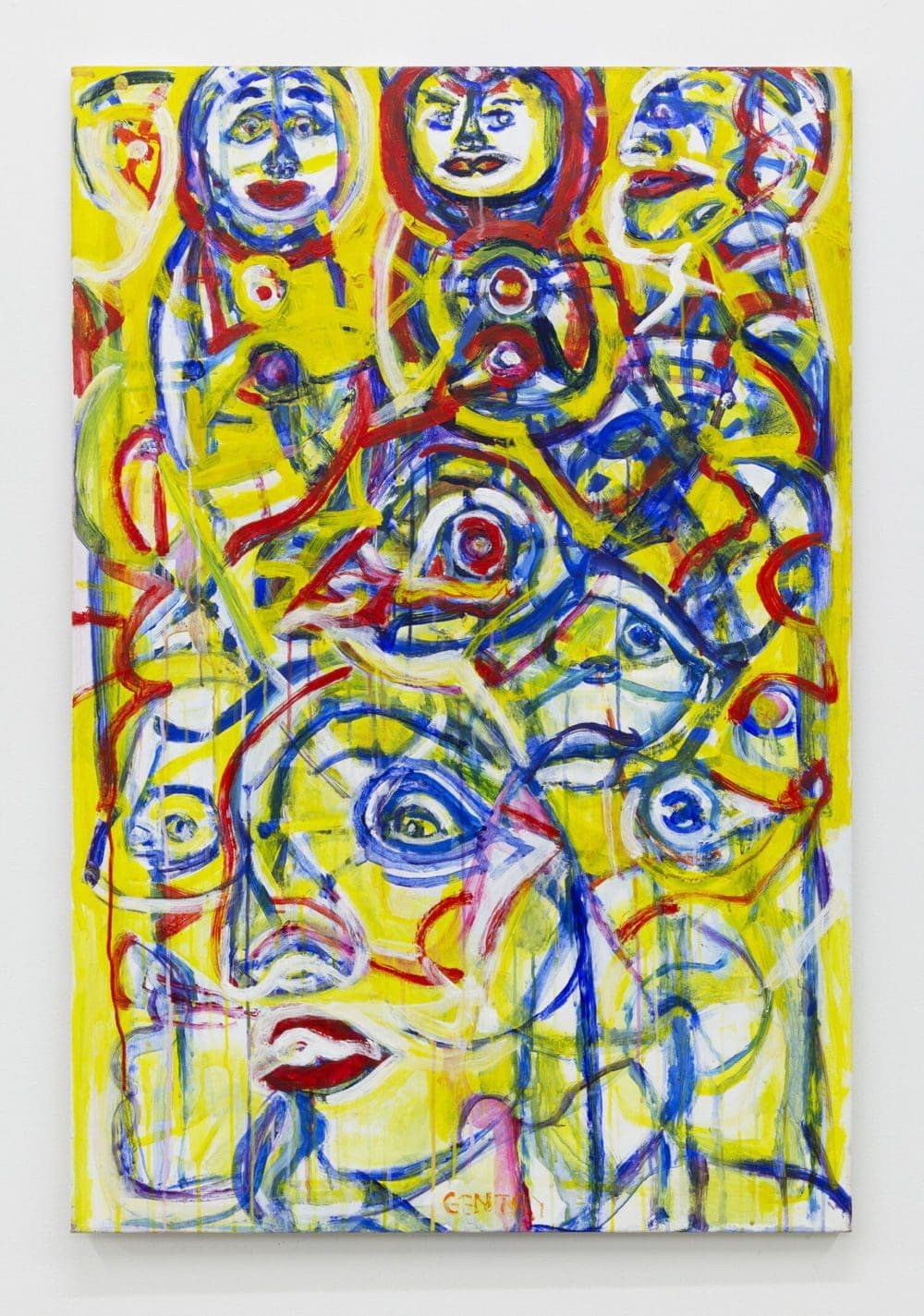Herbert Gentry
b. 1919 Pittsburgh, PA – d. 2003 Stockholm, Sweden

















































BIOGRAPHY
Herbert Gentry (b. 1919 Pittsburgh, PA - d. 2003 Stockholm, Sweden) was a painter whose gesturally abstract works were influenced and shaped by the international career he led, that began with the Harlem Renaissance in which he grew up, took hold in a post-war Parisian art scene, and continued in leading Scandinavian jazz capitals and Manhattan’s famous Chelsea Hotel, where he lived in between stays in Europe.
Gentry’s art is difficultly defined by any established stylistic category. While in Paris, he was taught by Georges Braque, and was profoundly interested in the modernist ideas of Cubism and Expressionism, as well as non-western art. At this time, he became acquainted with members of the CoBrA group who introduced him to ideas of automatism and the concept of the artist as an inherently social being. “Art is mysterious,” Gentry explained in 1991. “It’s about me, it’s about you, it’s about my family, my forefather’s, my mother’s. It’s not only me who’s painting, it’s the people who lived before me, connected with me.” This confluence of stylistic influences and artistic theories is evident in his 1940s and 1950s paintings, in which Gentry relied on rhythmic brushstrokes, compressed spaces and nonwestern motifs.
His compositions are characterized by vividly gestural mark-making that imply calligraphic roots but can hardly be recognized as sign-writing. Gentry’s swirling lines are neither expressionistic nor tachistic, but rather evoke a direct print of movement, made up of quick dashes and elongated strokes. The overlapping forms, fused by line and color, are diligently organized by an inner sense of rhythm that both structure and emanate from Gentry’s paintings. Figures, reminiscent of Picasso’s revolutionary abstractions and the so-called “primitive” western African masks that inspired him, organically come together in Gentry’s maze of lines and bright colors. These figures, that appear more as unconscious reminiscences of a presence rather than an actual silhouette, are alternatively the subject and background of the bustling activity that Gentry projects onto his canvas. As Romare Bearden once wrote, Gentry “celebrates his joy in living with lust pigments that swing across his canvas in a swirling activity. In his sensual enthusiasm for the drama of color and of life, everything in the works appears to be vibrating with a sonority that comes not so much from actual visual experience, but rather from an assimilation of many, many things both seen and felt and imagined.”
Born to a dancer and a Ziegfeld girl who performed with the likes of Josephine Baker, Gentry was raised in a home frequented by artists, dancers and musicians. He was drafted as a soldier in the 1940s at the outbreak of the Second World War, and first came to the French capital in 1944. He studied at the Sorbonne and later the Académie de la Grande Chaumière, where he eventually taught. In the late 1950s, his career shifted to Copenhagen, where he would establish a base for himself among several prominent jazz circles in Scandinavian cities. Following this move, gestural abstraction became his primary style, and his career flourished in Denmark and later in Sweden. He eventually became the first non-Scandinavian to be featured in a major retrospective at the Royal Art Academy in Stockholm in 1975. During this time, his transatlantic career was split between Sweden and New York City’s Hotel Chelsea. He continued to be implicated in the city’s vibrant jazz circles, and this musical impulse is reflected in the lyrical nature of his art. Gentry’s presence in the New York City art world came with increased American curatorial attention from the 1980s on. In 1996, he was included in the Studio Museum in Harlem’s important exhibition, Explorations in the City of Light: African-American Artists in Paris 1945-1965.
Gentry’s work has been exhibited in group and solo exhibitions at the Mitchell Art Museum, MD; San Francisco Museum of Modern Art, CA (2022); David C. Driskell Center, MD (2022); Hudson River Museum, NY (2021); Westmoreland Museum of American Art, PA (2020); Wichita Art Center, KS (2020); Detroit Art Institute, MI (2019); Wadsworth Atheneum, CT (2019); St. Louis Art Museum, MO (2019); Rollins Museum of Art, FL (2019); Dubuque Museum of Art, IA (2019); Museo Nacional Centro de Arte Reina Sofia, Madrid (2018); Montclair Art Museum, NJ (2018); Portland Art Museum, OR (2017); National Museum of African American History & Culture, Washington DC (2016); Boston University Art Gallery, MA (2014); Smithsonian American Art Museum, Washington DC (2014); Studio Museum in Harlem, NY (2013); Woodmere Art Museum, PA (2008); University of Rochester, NY (2007); Louisiana Art and Science Museum, LA (2003); Hirshhorn Museum, Washington DC (1997); New Museum, NY (1985); Cité Internationale des Arts, Paris (1978); Amos Rex, Helsinki (1976); and Royal Academy of Fine Arts, Stockholm (1975).
Gentry’s work is featured in numerous prominent museum collections, including the Amos Rex, Finland; Basel Kunstmuseum, Switzerland; Brooklyn Museum, NY; de Young Museum, California Fine Arts Museums, CA; Hirshhorn Museum, Washington DC; Howard University Gallery of Art, Washington DC; Metropolitan Museum of Art, NY; Moderna Museet, Sweden; Museo Nacional Centro de Arte Reina Sofia, Spain; National Gallery of Modern Art, India; National Museum, Sweden; National Museum of African American History and Culture, Smithsonian, Washington DC; Philadelphia Museum of Art, PA; St. Louis Art Museum, MO; Smithsonian, American Art Museum, Washington DC; Stedelijk Museum, Netherlands; Studio Museum in Harlem, NY; and Yale University Art Gallery, CT.
News
Publications

Herbert Gentry: Paris and Beyond 1949 -1978

Herbert Gentry: The Man – The Master – The Magic
157 pages